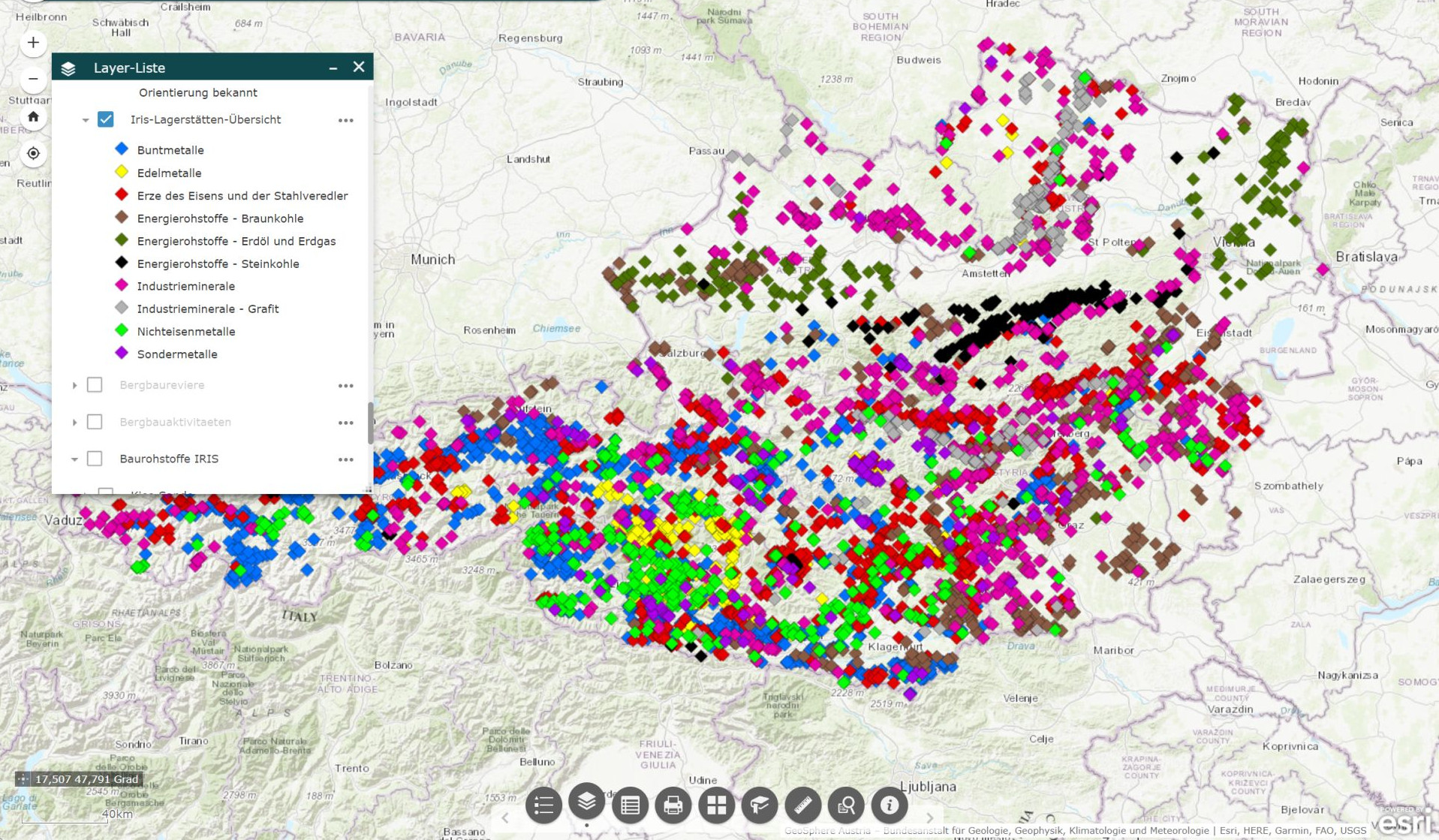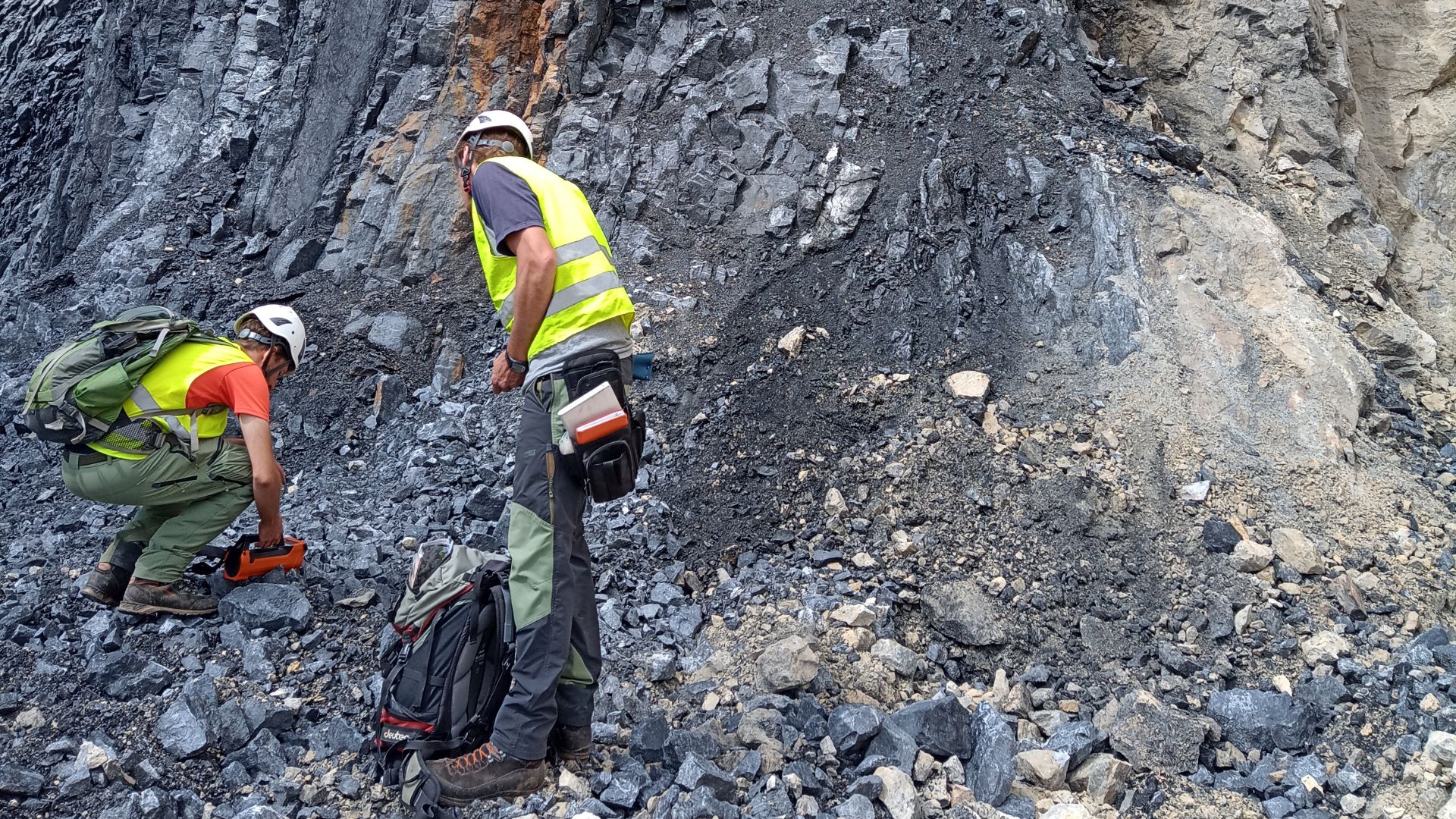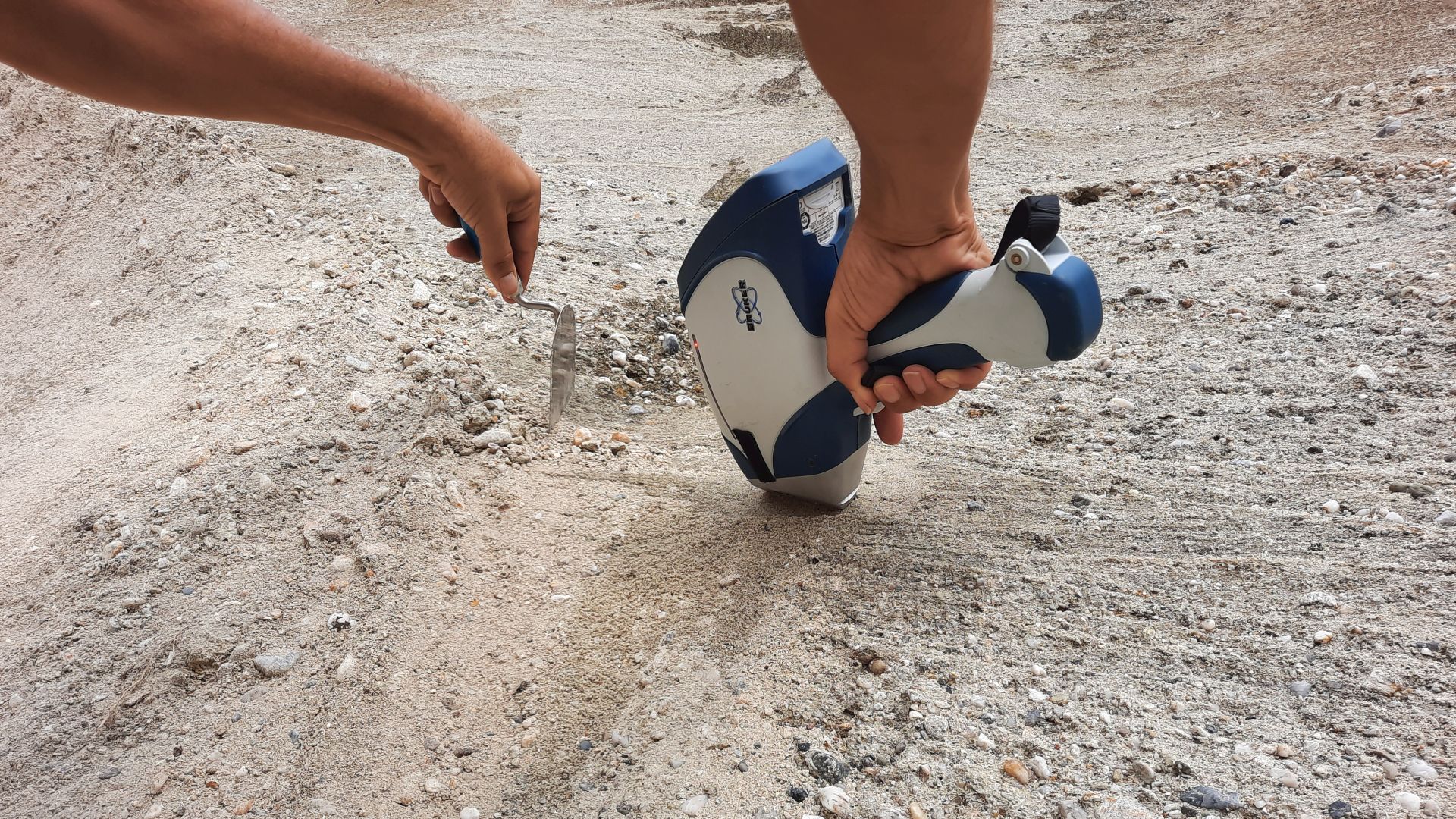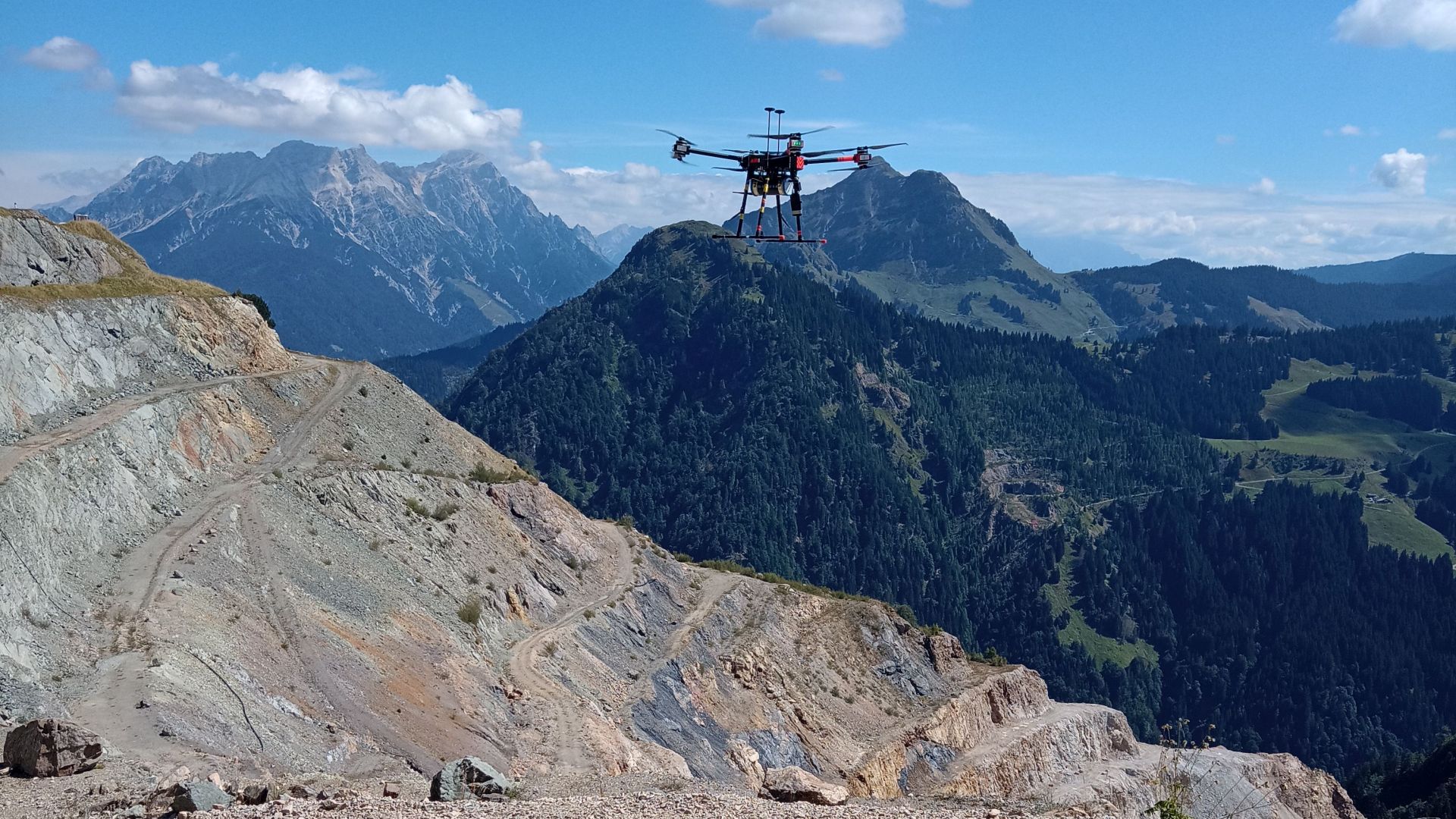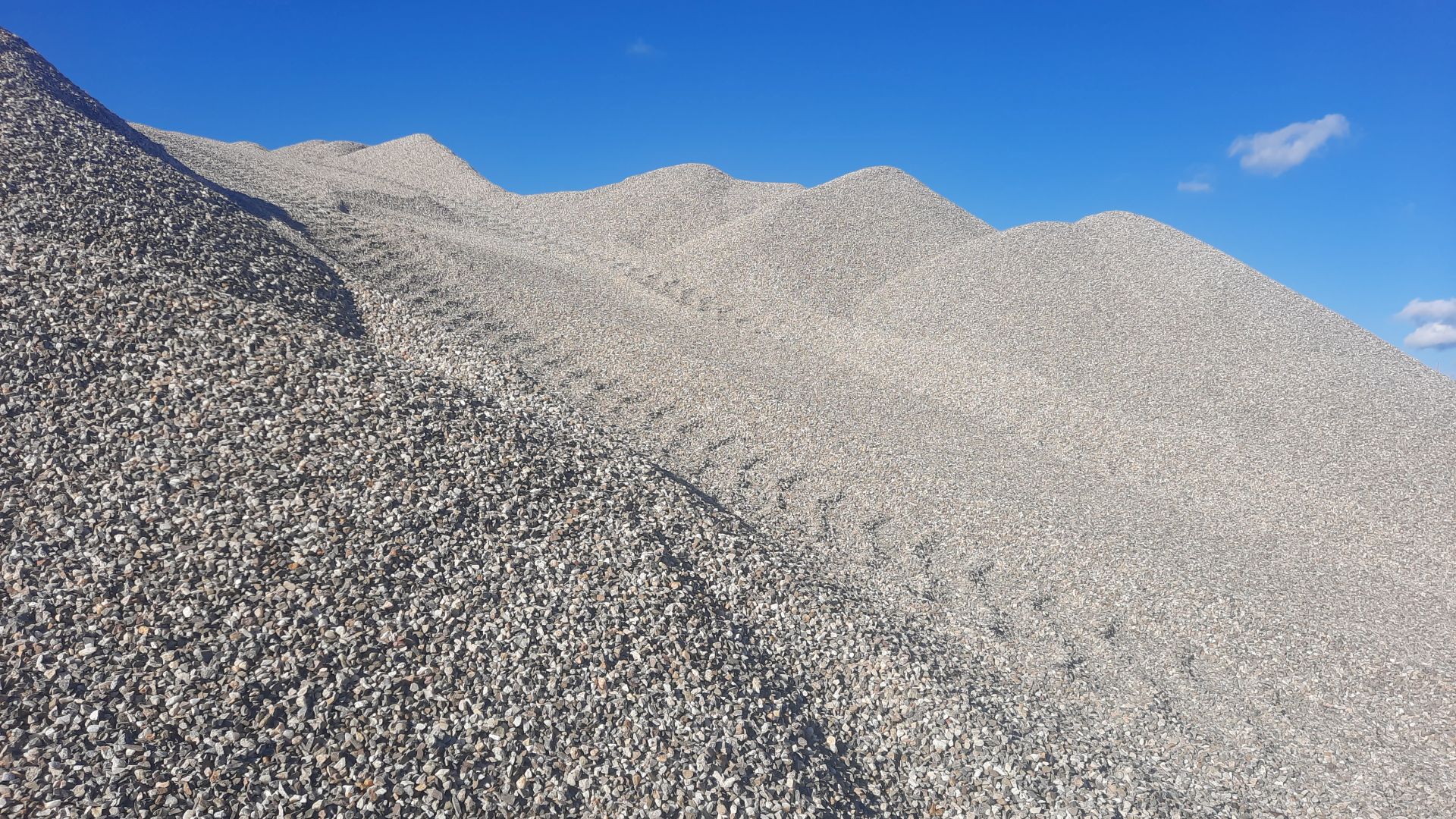- X-ray fluorescence and mass spectrometry for determining rock chemistry.
- Scanning electron microscopy for mineral analysis.
- X-ray diffraction for determining the mineralogical composition.
- Portable spectrometers for on-site mineralogical or geochemical analyses.
- Sedigraph and petroscope for determining grain sizes and rock content.
- Geochronology of rocks.
- Trace element and isotope analysis in minerals.
Mineral Resources
As the foundation of our modern society, mineral resources play a central role in the path to a climate-neutral Austria.
Virtually all objects, infrastructures, and energy systems on which we rely in our daily lives require mineral resources. This includes all products, from toothpaste to mobile phones, from roads to railways and from gas heaters to solar panels. Primary raw materials such as iron ore, gravel, sand, clay, lithium or petroleum are extracted from the ground through mining as well as drilling and processed into materials and fossil fuels. Recycling of mining waste or recyclable waste (urban mining) serves as a potential source for secondary raw materials.
Mineral resources are essential components in technologies for harnessing renewable energy sources. Rare earth elements, such as neodymium, are used in magnets, which are necessary for wind turbines. Lithium and cobalt are necessary for the production of batteries for electric vehicles and energy storage. High-purity silicon is produced from quartz raw materials, which is used as wafers in solar cells and computer chips. Construction raw materials, like sand or gravel, are needed for the foundations of wind power plants. Additionally, copper is considered a key element for the electrification and digitization of our civilization.
However, mineral resources are not available everywhere or in unlimited quantities. Mining in Austria and in many parts of Europe has lost significance in the second half of the 20th century due to structural changes in the raw materials industry and globalized world markets. Nevertheless, Austria holds a significant role in Europe, especially for resources like tungsten, magnesite and talcum.
Critical raw materials
Raw materials for green and digital technologies as well as for the aerospace and defense industries, are classified as critical or strategic by the European Union (EU). These resources are increasingly the focus of political decision-making and public attention at the national and European levels. The EU is heavily dependent on imports of critical raw materials from non-EU countries, which, combined with increasing global demand, leads to vulnerable supply chains. Austria and the EU must adapt to these conditions of raw material availability, for example, by diversifying the origin of raw materials and increasing the use of domestic sources.
GeoSphere Austria collects geologically relevant rock samples and compiles data on active and abandoned mining regions as well as raw material deposits in its collections and archives. These include historical mining maps, various databases of chemical and mineralogical rock analyses, maps of geophysical surveys of the subsurface, as well as results from various research projects. These raw material data can be accessed online via the interactive raw materials information system IRIS-Online, which includes maps and publications.
The core task of GeoSphere Austria is to conduct geological surveys using analytical methods in the field and its own laboratories to expand knowledge on the distribution and formation of mineral deposits. This contributes significantly to estimate the quality and quantity of mineral resources in Austria and provides the geoscientific basis for targeted exploration of new deposits. GeoSphere Austria is also involved in approval procedures for extraction projects under the Mineral Resources Act (MinroG).
The Mineral Resources Act (MinroG) of 1999 forms the basis of Austrian mining law and regulates the exploration, extraction, and processing of mineral resources. These are classified as federal, freely mineable, and privately owned. The law also governs the exploration and research of geological structures intended for the storage of liquid or gaseous hydrocarbons, as well as the extraction and storage of these resources.
- Freely mineable: Includes resources such as iron, gypsum, coal, and magnesite, which can be explored and extracted by anyone who meets the legal requirements.
- Federally owned: Includes resources such as rock salt, hydrocarbons and uranium, which are owned by the federal government and whose use is strictly regulated.
- Privately owned: All mineral resources that are not defined as freely mineable or federally owned belong to the respective landowner.
The exploration of Austria’s raw material deposits, the development of methods for raw material analysis and the collection and processing of data are carried out within the framework of various research programs with national and international sponsors and research partners. The measurement data obtained are accessible via maps, reports and publications. GeoSphere Austria has various geochemical, geophysical and mineralogical analysis and measurement methods at its disposal to characterize and model raw material deposits.
- Mining authorities in the context of approval procedures.
- Mining companies for exploration activities.
- Federal states and municipalities for regional inquiries about mineral resources.
- University and non-university research institutions for scientific projects and teaching.
- Engineering and civil engineering companies.


